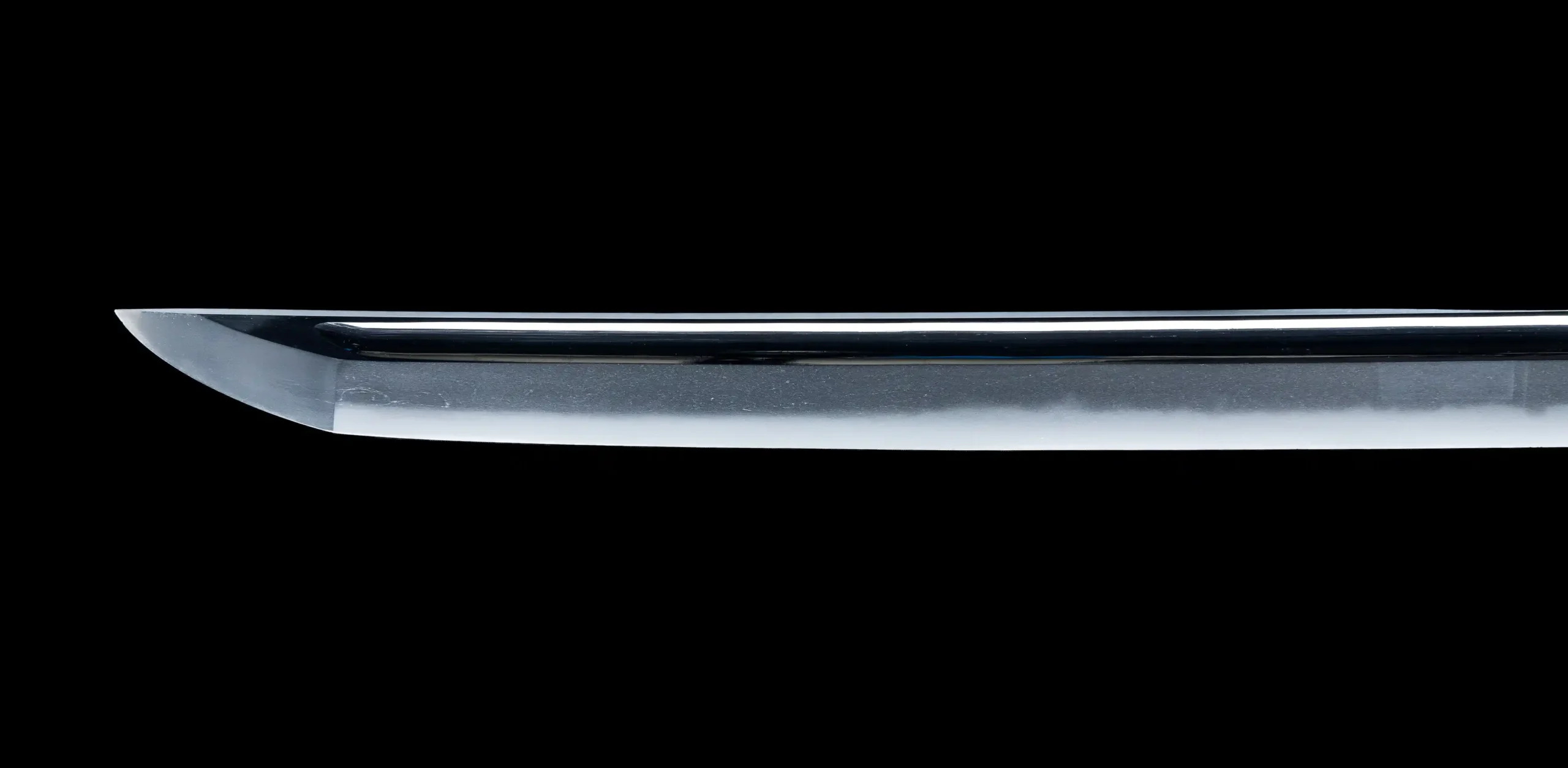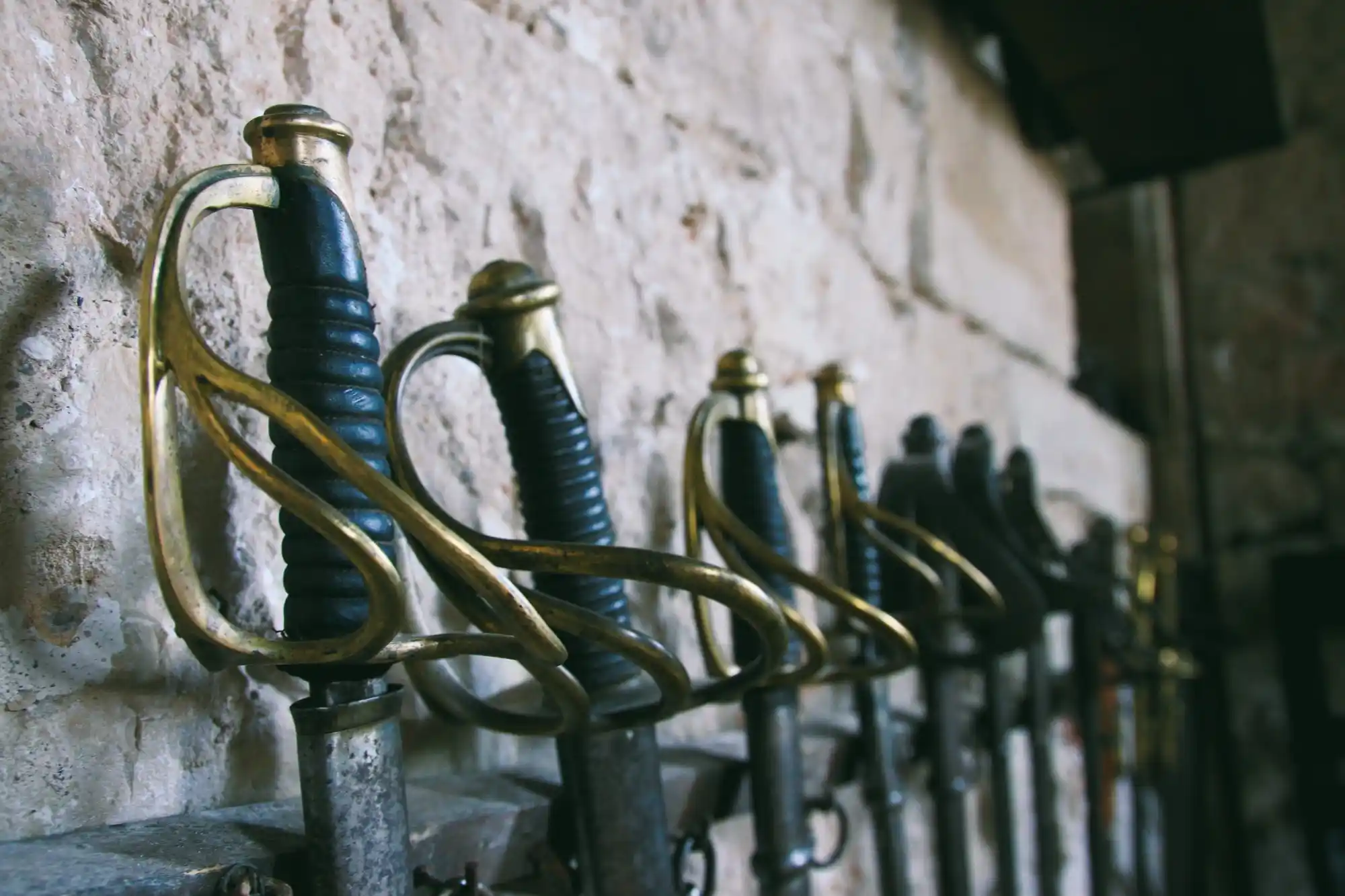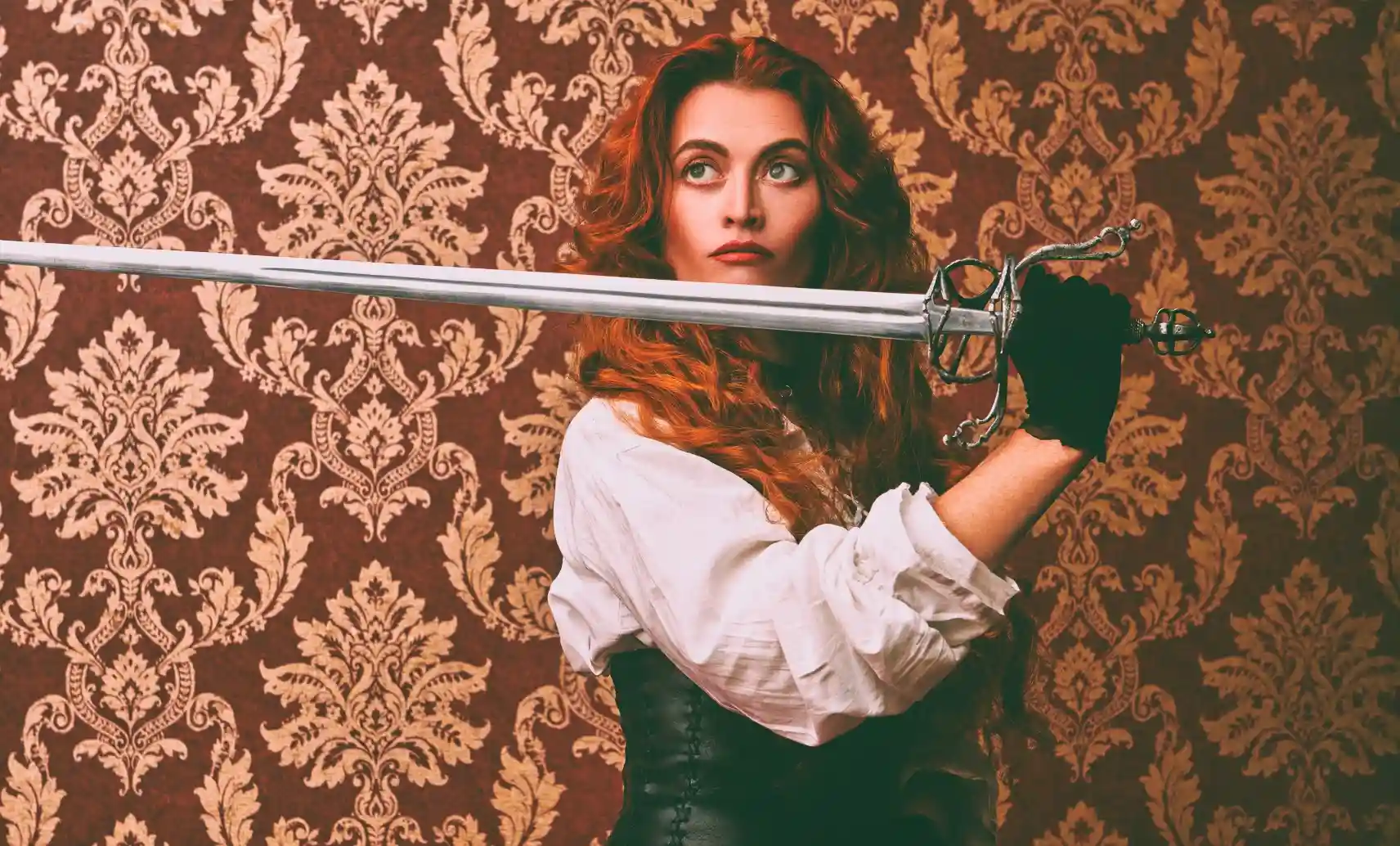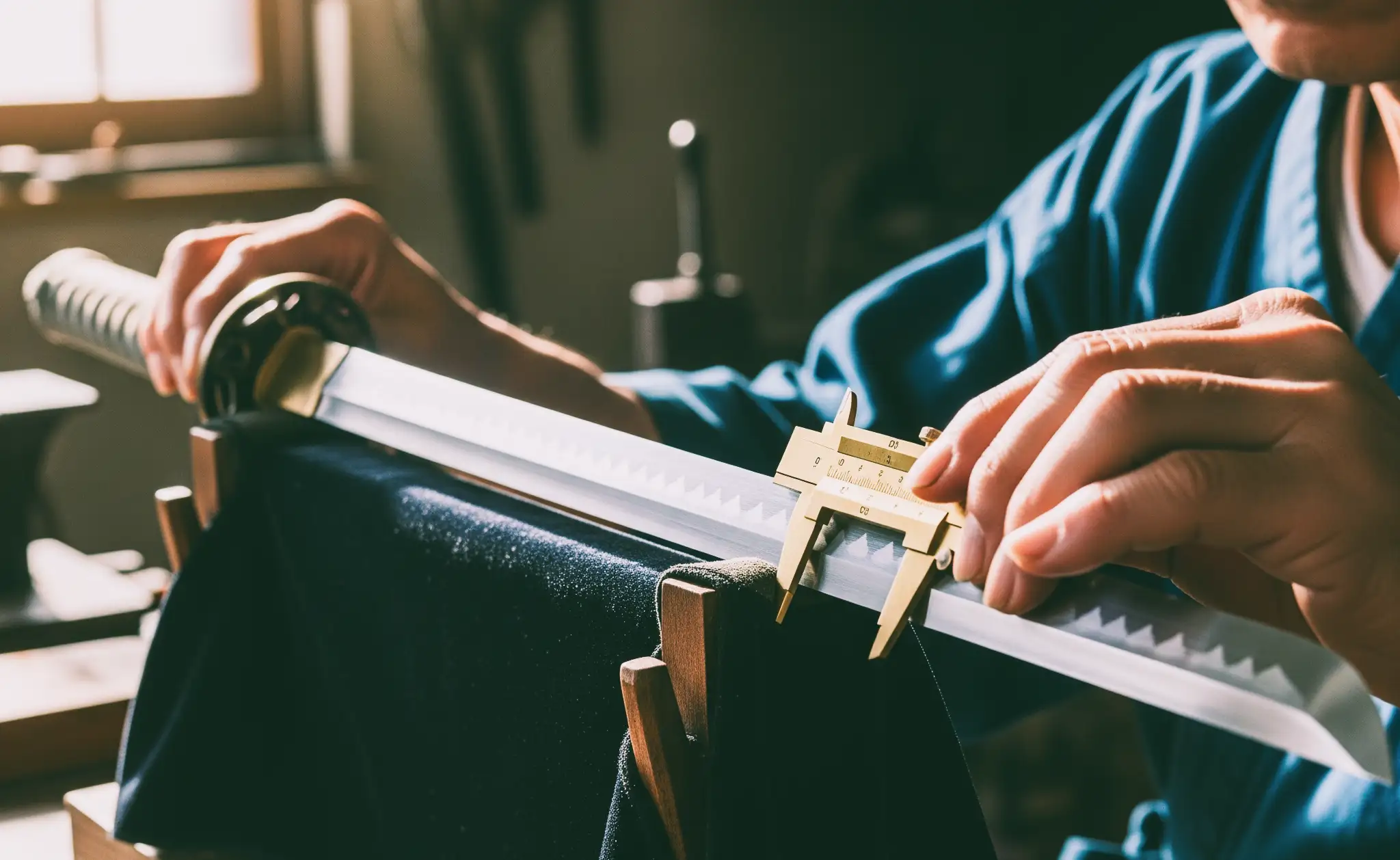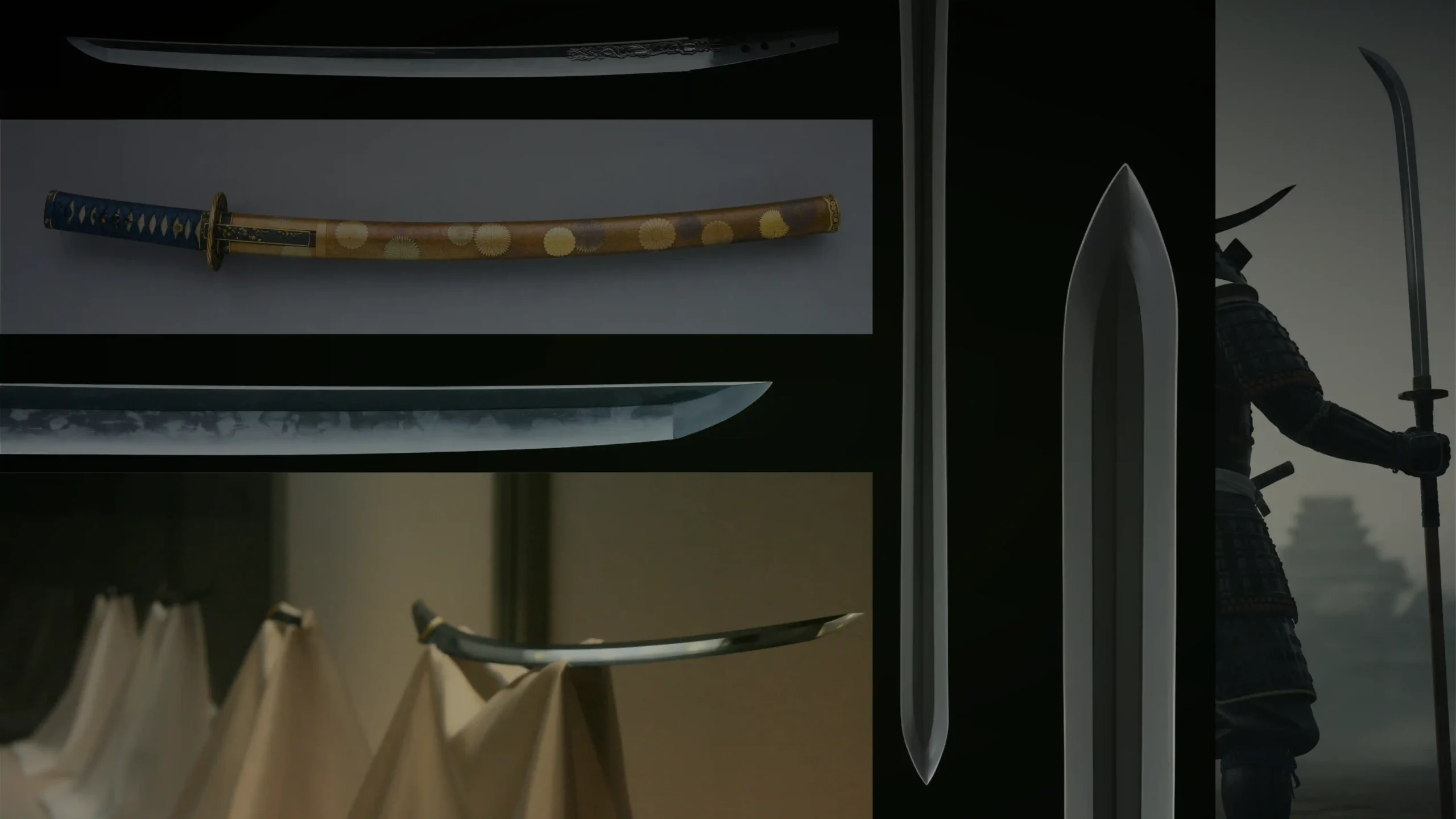We may earn revenue from the products available on this page and participate in affiliate programs. Learn more >
The sabre is a type of one-handed sword, known for its curved, single-edged blade. What made this sword so effective was its ability to deliver fast, powerful slashing attacks, especially from horseback. In this guide, we will explore the sabre’s place in history, its various designs, notable types, and everything else you need to know about this iconic weapon.
Understanding Sabre Swords
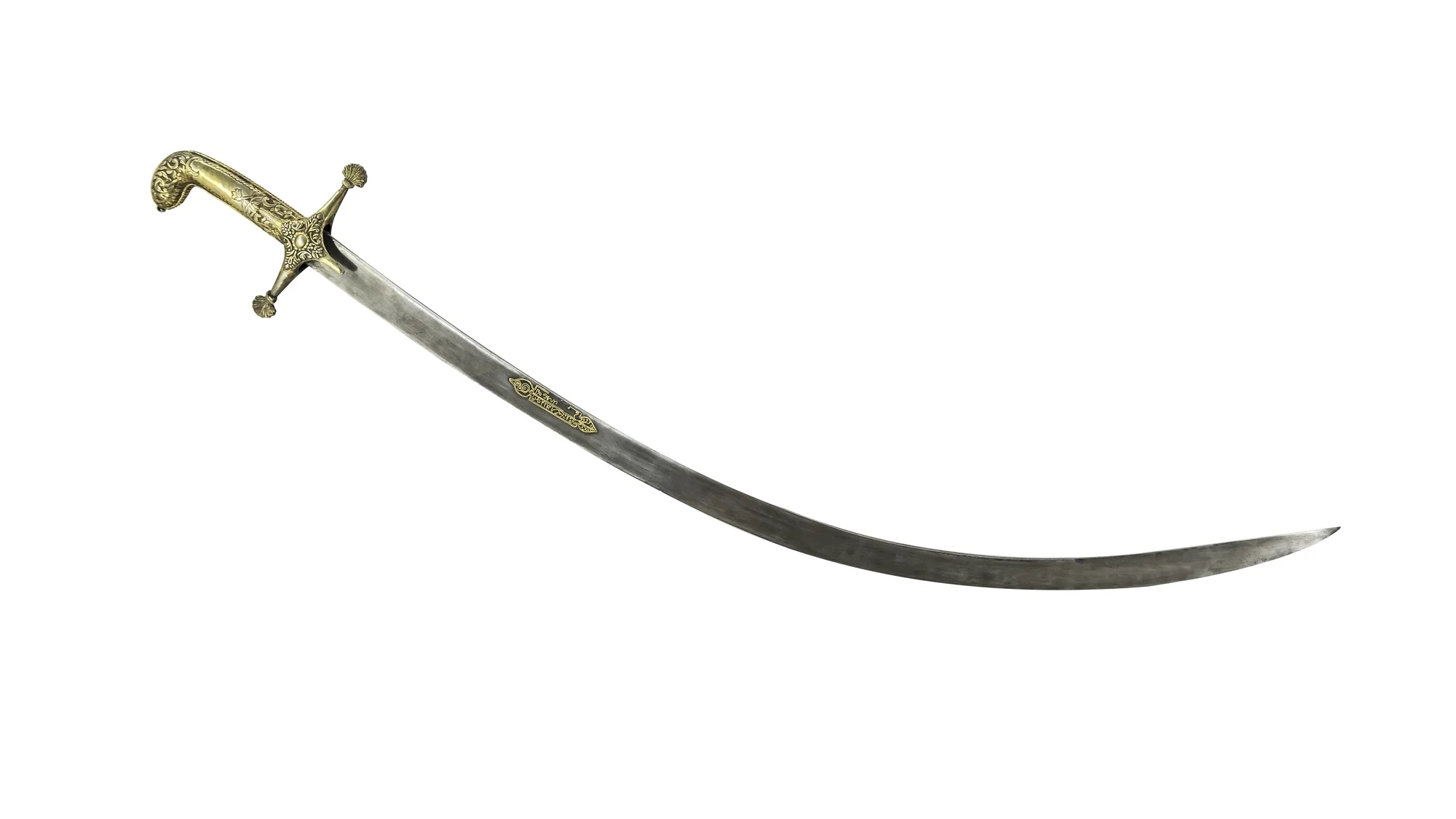
What is a Sabre Sword?
Saber or sabre sword, is a type of blade distinguished by its distinctively curved, primarily single-edged design. Historically, it was favored in both cavalry and infantry roles due to its slashing efficiency.
Over time, it has evolved into various forms, serving both combat and ceremonial purposes. These swords are characterized by their curved blades, crafted for swift, sweeping motions and optimized for one-handed use, often incorporating a protective guard.
The specific curve of the blade can vary widely among different types, each adapted to the particular needs of the wielder.
| Attribute | Description |
|---|---|
| Name | Sabre |
| Origin | Central Asia, Europe |
| Era | Medieval to 19th Century |
| Blade | Curved, single-edged |
| Guard | Cross guard with various designs |
| Grip | Typically one-handed |
| Use | Cavalry combat, fencing |
History of the Sabre
It all started with the early scimitars of the Middle East, which were among the first curved blades used in combat. However, the true development of the sabre began with the nomadic tribes of Central Asia. These tribes needed a weapon that was light and effective for horseback fighting. They found that curved blades were perfect for swift, powerful slashes while riding.
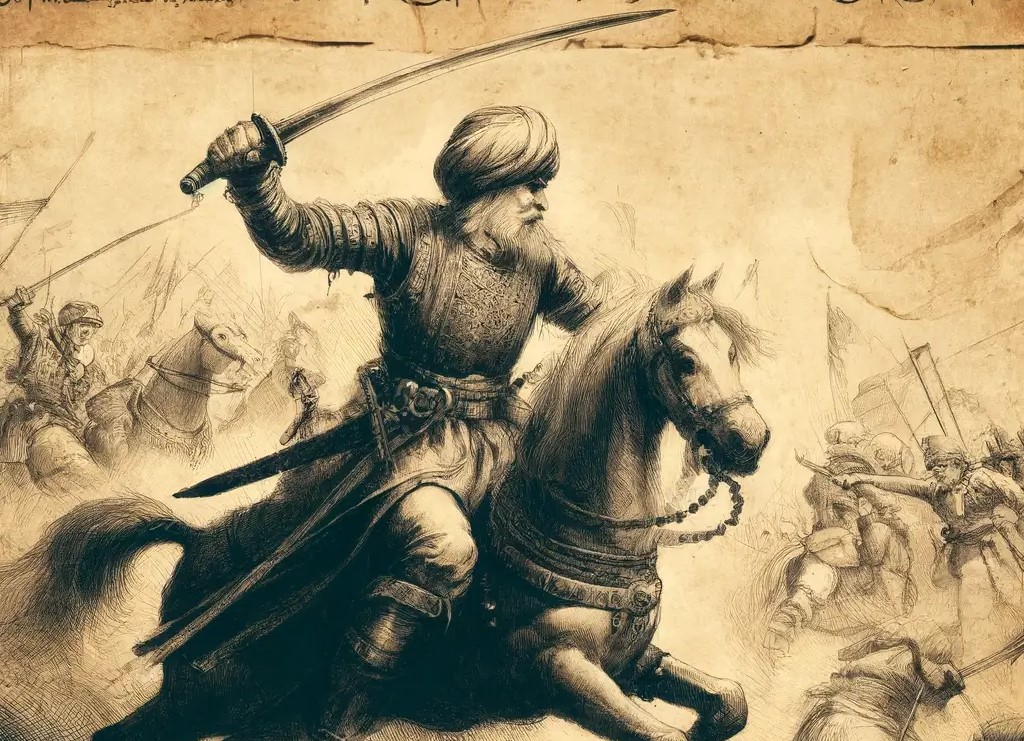
As these nomadic warriors moved and traded, their curved swords influenced other cultures. The sabre spread to Europe, where it became popular with cavalry units. European armies adapted the design, making it lighter and more suited for their needs.
In my opinion, the sabre’s curved blade design revolutionized mounted combat. It combined the speed and agility required for horseback fighting with the power needed to cut through armor and flesh. This mix of practicality and effectiveness is why the sabre became such a significant weapon in military history.
Sabre design and anatomy
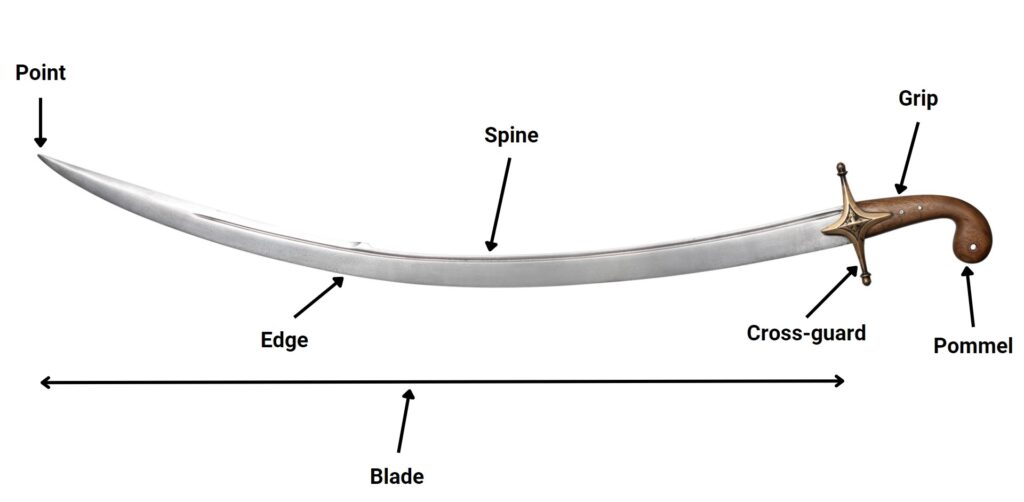
To fully appreciate these swords, it’s important to understand their design and anatomy. Every part, from the blade to the scabbard, contributes to their functionality and aesthetic appeal.
Blade

The sabre blade is instantly recognizable by its distinctive curved shape, which contrasts with the straight blades of other types of swords. This curvature is not just for show; it enhances the sword’s slashing capability, making it ideal for cavalry charges and swift, sweeping cuts. Typically, sabre blades range from 75 to 85 centimeters in length, though variations exist depending on historical and cultural contexts. Historically, these blades were forged from high-carbon steel, offering both flexibility and durability.
Guard

Guards on these swords are more than just protective features; they showcase the craftsmanship and the historical era each piece represents. Ranging from simple, functional designs to elaborate works of art adorned with precious metals and stones, these guards vary widely. While their primary purpose is to protect the hand during battle, they also significantly influence the balance and handling of the weapon, enhancing its overall effectiveness in combat.
Grip and hilt
The grip and hilt of a sabre are designed for optimal handling and comfort. Typically, the grip might be crafted from leather, wood, or wire-wrapped materials, providing a firm hold even in the heat of battle. The hilt often includes a pommel, which helps balance the sword and can be used as a striking surface in close combat. The design of the hilt impacts the overall handling of the sabre, affecting everything from the ease of motion to the precision of strikes.
Scabbard

While not always the focus of attention, the scabbard is an integral part of a sabre’s design. It serves not only to protect the blade but also to offer ease of carry and quick drawing capability. Made from materials such as leather or metal, scabbards can be simple and functional or elaborately decorated to match the sword.
Famous Types from different countries
Sabres have appeared in various forms across the globe, each reflecting the unique cultural and historical influences of its region. Here are some of the most popular types of sabres from different countries:
The Indian Talwar
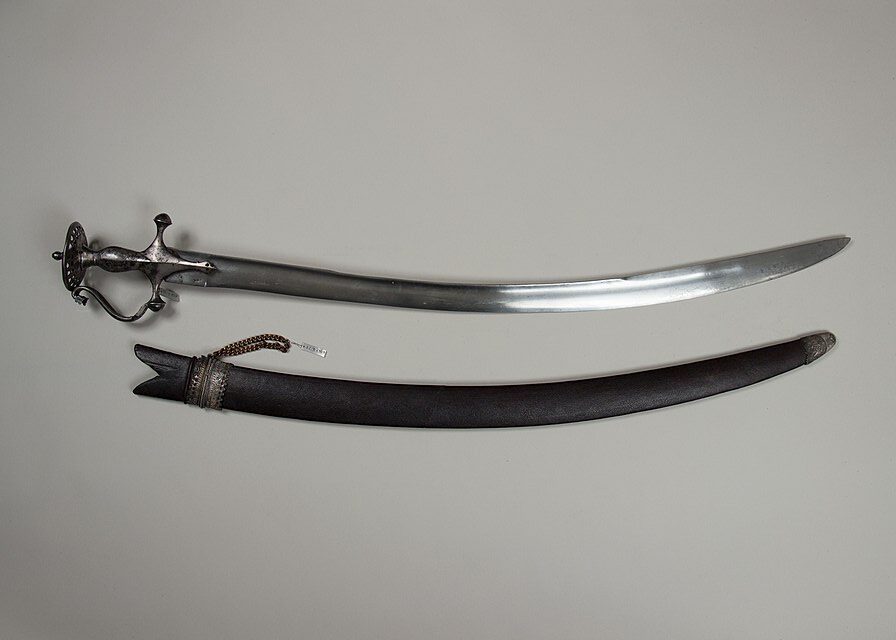
The Talwar is a traditional Indian sabre sword characterized by its deeply curved blade and distinctive disc-shaped pommel. It was extensively used by both cavalry and infantry, admired for its cutting power and durability. Today, the Talwar remains an integral part of ceremonial military attire in India, representing a rich heritage of swordsmanship and warfare.
The Turkish Kilij
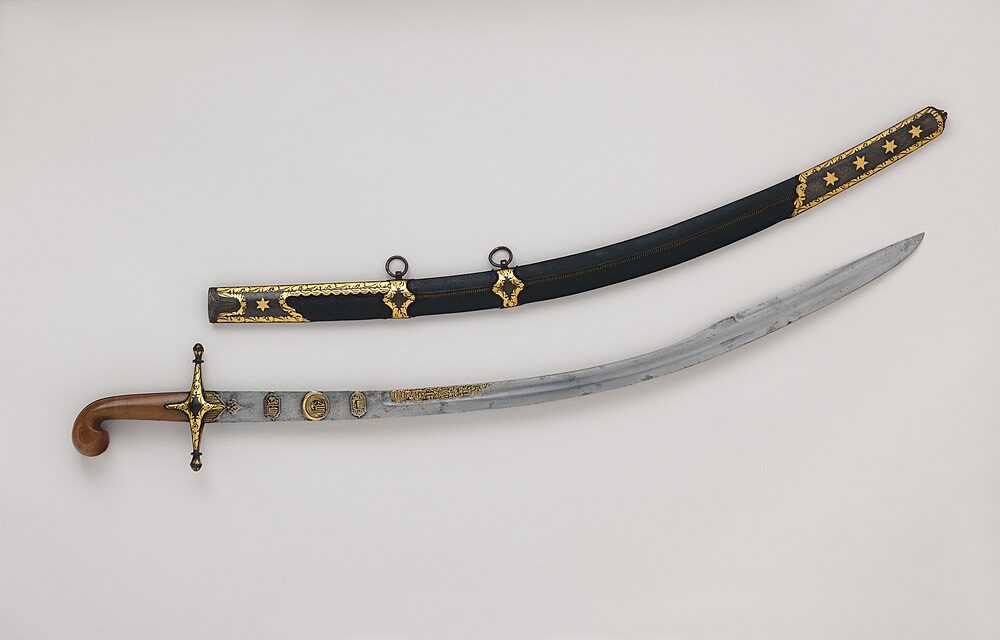
The Kilij, pronounced “kee-lidge,” is a distinctive Turkish sword known for its curved blade with a flared tip, enhancing its cutting power. Used by Ottoman cavalry, this sword balanced weight and agility, making it effective for slashing and thrusting.
The word “kilij” means “sword” in Turkish. Today, it’s admired for its historical significance and craftsmanship. Collectors and historians value it for its beauty and combat effectiveness.
The Persian Shamshir
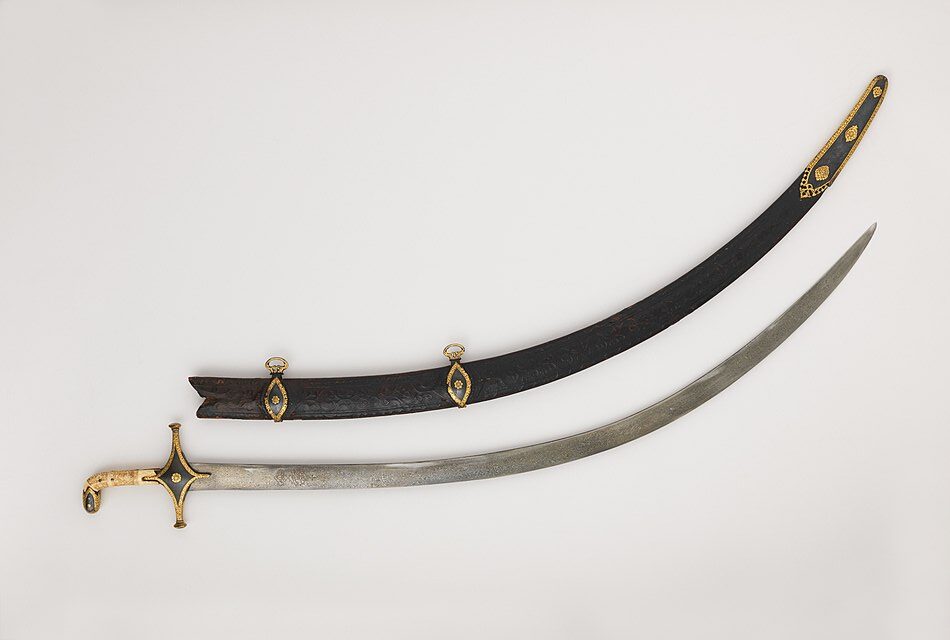
Similar to the Turkish Kilij, the Persian Shamshir features a more extreme curve, a feature that significantly enhances its effectiveness in slashing attacks, typical of traditional Persian warfare. This sword was a staple among cavalry units, designed to deliver powerful cuts from horseback, which made it a crucial weapon in the expansive military campaigns of the Safavid dynasty.
The blade’s pronounced curve allowed for fluid, sweeping motions, facilitating strikes that could be executed swiftly while passing by opponents, minimizing the rider’s exposure to counterattacks. This design also made the Shamshir a highly ornate object, often embellished with intricate engravings and inlaid with gold or silver, reflecting its status as a symbol of prestige.
The Polish Szabla

The Polish Szabla is a renowned Polish sabre sword, closely tied to the nation’s military history and cultural identity, especially famous for its association with the legendary Winged Hussars. Unlike the deeper curves of Middle Eastern blades, this sword features a more subtle curve, aligning with the specific combat strategies of Polish cavalry.
Designed for swift and effective cuts and thrusts, the Szabla’s versatility proved crucial in the mobile warfare that marked Poland’s military actions from the 16th to the 18th centuries. Its relatively straighter edge allowed for more precise thrusting attacks, maintaining robust slashing capabilities.
The French Briquet
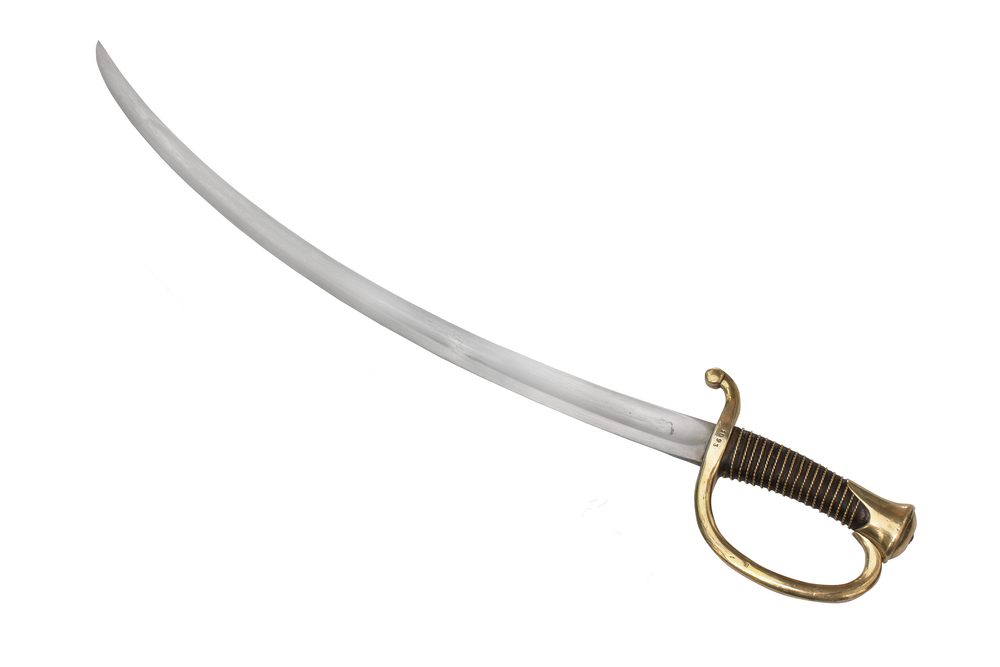
The French sabre sword, distinct from the elongated Chinese version, is recognized for its compact design and extensive use by infantry during the Napoleonic Wars. This model featured a short, broad blade engineered for close quarters combat, allowing soldiers to engage quickly on crowded battlefields or in trench scenarios. Its practicality, considerably shorter than typical swords of its kind, ensured optimal balance between functionality and maneuverability for foot soldiers. The blade was ideal for effective, quick strikes necessary in confined spaces.
The hilt of the Briquet, simpler than that of many period swords, was robustly constructed, often with sturdy brass that offered both durability and a modest level of hand protection. Although it lacked the intricate decorations of ceremonial blades, it was highly valued for its reliability and effectiveness under the strenuous conditions of warfare.
The American Sabre

The Model 1860 Light Cavalry Sabre, a quintessential weapon of the U.S. cavalry, is widely recognized for its significant role during the Civil War. This American sabre sword features a slightly curved, single-edged blade that perfectly balances slashing efficiency with thrusting potential, suiting the fast-paced and versatile demands of cavalry engagements.
The blade, designed for resilience and flexibility, measures about 35 inches in length, enabling cavalrymen to deliver powerful cuts from horseback while maintaining the maneuverability needed for close combat. Its moderate curve aids both the reach necessary for charges and the agility required in more confined skirmishes. It is accompanied by a simple yet sturdy brass hilt and a leather-wrapped grip, this model offers a comfortable and secure hold.
Usage-based categories
Military

Used across various armies throughout history, military sabre swords were built for practicality and durability. They often feature a moderate curve and a robust construction, optimized for both cutting and thrusting in close combat. Different countries and eras have their unique designs, reflecting the specific military tactics and technology of the time.
Cavalry

Specifically designed for mounted warfare, cavalry sabres are usually lighter and more curved than their infantry counterparts. The design focuses on speed and maneuverability, allowing riders to slash effectively at opponents without getting entangled. The curvature is particularly useful for making quick cuts while moving at high speeds on horseback.
Dueling

These sabres are slimmer and more flexible compared to military sabres, tailored for one-on-one combat where precision and agility are crucial. Dueling sabres emerged as a popular choice in the 18th and 19th centuries when personal honor disputes were often settled by duels. They are balanced for quick wrist movements and precise control.
Decorative
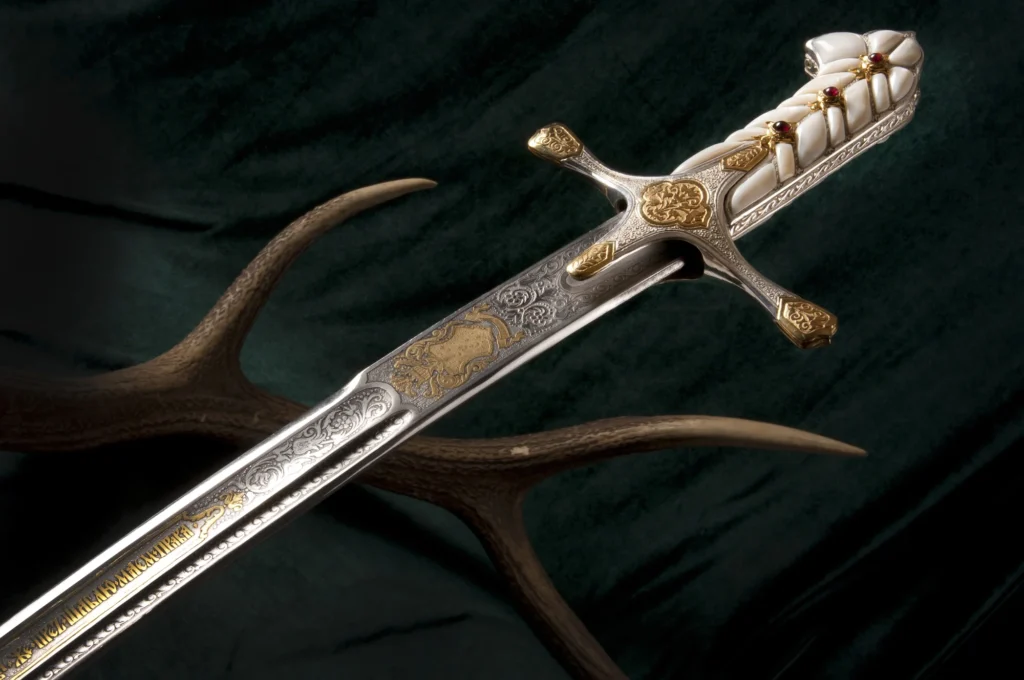
While not intended for combat, decorative sabres are crafted with an emphasis on aesthetics and ceremonial use. These sabres often feature elaborate designs, including engraved blades, ornate guards, and jewel-encrusted handles. They are used in military parades, ceremonial duties, and as part of traditional uniforms, symbolizing rank and prestige.
Fencing

In modern days, you will find sabre fencing as one of the three main disciplines in Olympic fencing, alongside foil and epee. It is a fast-paced and dynamic sport where competitors aim to score points by striking their opponent with the edge or the point of the blade. The target area in sabre fencing is everything above the waist, including the head and arms.
You can find sabre fencing in various settings, such as:
- Olympic Games: Sabre fencing has been a part of the modern Olympic Games since the late 19th century, attracting athletes from around the world.
- World Championships: The International Fencing Federation (FIE) organizes annual world championships where top fencers compete.
- National and Regional Competitions: Many countries host national championships and regional tournaments for fencers of all skill levels.
- Fencing Clubs and Schools: Numerous clubs and schools offer training in sabre fencing for beginners and advanced fencers alike.
In my opinion, sabre fencing is an exciting and challenging sport that combines athleticism, strategy, and the timeless art of swordsmanship. It continues to attract new enthusiasts and maintains a strong presence in the world of competitive sports.
Last word
This historical weapon continues to be a symbol of elegance and efficiency. Originally vital for cavalry charges, today it finds prominence in the fast-paced world of competitive fencing. This shift from military utility to sporting excellence illustrates its lasting relevance. If you are curious about how the sabre compares to other timeless swords like the rapier, our in-depth comparison here breaks down their distinct features and historical applications. Whether in ancient battles or modern competitions, the sabre remains a celebrated weapon, cherished for its functional design and aesthetic allure.


